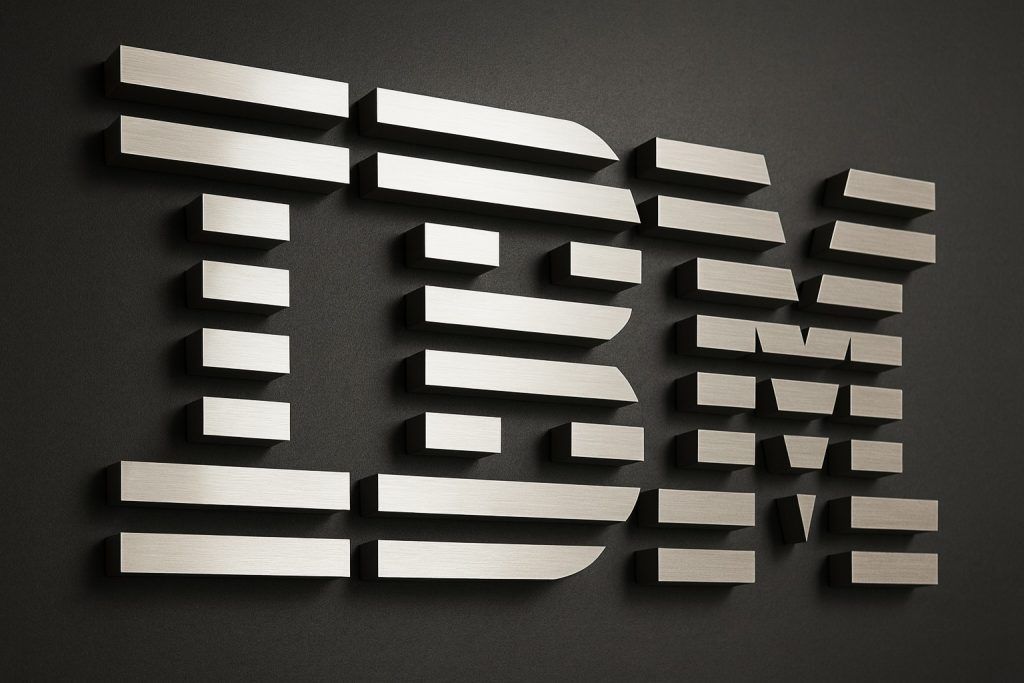- NYSE Owner Goes All-In: Intercontinental Exchange (ICE), the parent company of the New York Stock Exchange, is in talks to invest $2 billion in Polymarket – a crypto-based prediction markets platform – in a deal valuing Polymarket at up to $8–10 billion [1] [2]. ICE shares jumped ~4% on the news, reflecting investor optimism [3].
- Polymarket Explained: Polymarket is the world’s largest decentralized prediction market where users wager on real-world event outcomes in politics, sports, entertainment, economics and more [4]. For example, one popular market recently asked “When will the government shutdown end?”, letting traders bet on the date [5]. The platform uses cryptocurrency (stablecoins) and blockchain tech to facilitate these bets globally.
- Returning to U.S. Legally: After being fined in 2022 for running unregistered derivatives markets and barring U.S. users [6], Polymarket secured a no-action letter from the U.S. Commodity Futures Trading Commission (CFTC) in Sept 2025, clearing it to re-enter the U.S. market [7]. CEO Shayne Coplan hailed the CFTC’s decision as a “green light to go live in the USA” – an approval achieved in record time [8].
- Big Names & Backers: Polymarket’s rapid rise has drawn high-profile support. Billionaire Peter Thiel’s Founders Fund reportedly led a mid-2025 funding round valuing Polymarket above $1 billion [9]. In August, Donald Trump Jr. joined as an adviser [10], just as Polymarket’s U.S. presidential election markets gained massive attention [11]. ICE’s potential stake would mark the first major Wall Street institution betting on such a platform, lending it even more credibility [12] [13].
- Disrupting Betting & Finance: The deal underscores the surging popularity and legitimacy of prediction markets, which some analysts say could explode from a ~$1.5 billion niche today to a $95 billion industry by 2035 [14]. These markets pose a new competitive threat to traditional gambling – one prominent short-seller warned that Wall Street is “downplaying the tectonic shift” prediction platforms could bring to sports betting giants like DraftKings [15]. Even regulators and casino interests are grappling with this trend, calling it a “competitive challenge and a regulatory dilemma” for the gaming industry [16].
ICE’s $2 Billion Vote of Confidence in Polymarket
Intercontinental Exchange Inc. (ICE) – best known as the owner of the NYSE and other major exchanges – is nearing a deal to buy a $2 billion stake in Polymarket, according to reports by The Wall Street Journal and Bloomberg. Such an investment would value the upstart platform as high as $8–10 billion [17] [18], making it one of the richest deals ever in the emerging prediction market sector. A formal announcement could come as soon as today (Oct 7, 2025), sources told the WSJ [19].
This would be a landmark mainstream endorsement of crypto-based betting markets. ICE’s backing – alongside venture investors like Peter Thiel’s Founders Fund – signals that Wall Street sees serious potential in Polymarket’s approach [20] [21]. Indeed, ICE’s stock price rose about 4.4% in pre-market trading after the news broke [22], reflecting excitement that the exchange operator is moving into a fast-growing new market. If finalized, the $2 billion stake would also mark ICE’s largest foray into the cryptocurrency space, after past ventures like its Bakkt digital asset platform.
Why would a venerable exchange group bet on Polymarket? Observers note that it marries two hot trends – crypto technology and real-time data trading – in a way that could complement traditional financial products [23] [24]. Prediction markets allow users to trade contracts on event outcomes (essentially buying “yes” or “no” shares on whether something will happen). The prices of these contracts reflect the crowd’s probability view of the event – essentially turning information and opinions into a traded asset. If Polymarket’s markets prove popular, ICE could eventually integrate or list similar event-based derivatives on its regulated exchanges, or tap Polymarket’s data for insights. The move “represents a bridge between legacy financial institutions and next-generation data-driven markets,” notes Bloomberg, indicating ICE is positioning itself at the crossroads of traditional finance and decentralized tech [25] [26].
What Exactly Is Polymarket? Inside the World’s Largest Prediction Platform
Founded in 2020 by then-22-year-old Shayne Coplan, Polymarket has quickly become the world’s biggest prediction market platform [27]. It runs on blockchain technology (hence the “poly” nod to Ethereum’s Polygon network) and uses cryptocurrency – historically the USDC stablecoin – as the medium for wagers. On Polymarket, users bet on the outcomes of real-world questions, from serious political events to pop culture. Key features of Polymarket include:
- Wide Range of Topics: Markets span politics (e.g. election results, legislation timelines), economics (Fed rate moves, job numbers), sports (game outcomes, player stats), entertainment and pop culture (celebrity news, award winners), and anything in between [28]. If there’s public interest and a verifiable outcome, it can likely be turned into a market. For instance, Polymarket gained fame for its live odds on the 2024 U.S. presidential election, giving an up-to-the-minute pulse of the race [29]. As of this week, users were even trading on “When will the U.S. government shutdown end?”, amid a Capitol Hill funding standoff [30].
- Decentralized & User-Driven: Unlike a traditional sportsbook or lottery, Polymarket doesn’t set the odds or take the opposite side of bets. It operates more like a marketplace or exchange. Users buy and sell outcome shares with each other, and prices fluctuate with supply and demand. The blockchain-based design provides transparency (anyone can verify outcomes and trades on-chain) and global accessibility. Polymarket’s markets are open globally (outside restricted jurisdictions), letting it tap into a worldwide user base of traders seeking to profit from their knowledge or predictions.
- Settlings via Oracles: Outcomes are typically determined by trusted data oracles (often via integrations like Chainlink or verified feeds) to ensure the result of each market is resolved correctly. This adds trust that payouts aren’t at the whim of the platform but based on verifiable facts.
- Scale and Liquidity: Polymarket has hosted thousands of markets and facilitated significant betting volume. By mid-2025, it had facilitated hundreds of millions of dollars in total trades – nearly three times the volume of its closest U.S. competitor, Kalshi [31]. One analysis noted Polymarket’s infrastructure handled over 24,000 distinct markets in a single month, demonstrating impressive scalability for a DeFi application [32]. This depth of liquidity and variety helps Polymarket attract serious bettors and “information traders” worldwide.
Crucially, Polymarket’s model has proven engaging during high-drama news cycles. During Elon Musk’s highly anticipated Tesla “robotaxi” launch this year, for example, Polymarket bettors wagered on whether Musk would deliver a true driverless taxi service by his promised deadline. When Tesla’s limited pilot (with safety drivers) failed to meet the criteria of a fully autonomous launch, the “Robotaxi” bets expired at zero, and many optimistic bettors lost their stakes [33]. Some furious Tesla fans even blamed Musk for their losses and demanded Polymarket change its rules, underscoring the real financial risk in following tech hype on these platforms [34]. This episode – where enthusiasm met reality – highlighted both the attraction of prediction markets (letting anyone put money on a claim) and the caveat emptor risk inherent in speculative betting [35].
Despite such controversies, Polymarket’s user base has continued to grow, drawn by the thrill of turning knowledge into profit. By aggregating the wisdom (and wagers) of thousands of users, prediction markets often yield uncannily accurate forecasts – a fact not lost on institutions. Polymarket’s markets essentially produce real-time probability data on world events, which could be immensely valuable to hedge funds, analysts, and even policymakers, provided the platform remains robust and credible.
From Crackdown to Comeback: Polymarket’s Regulatory Journey
Not long ago, Polymarket was in the crosshairs of U.S. regulators. In late 2021, the CFTC (Commodity Futures Trading Commission) investigated Polymarket for offering event-based binary options without proper registration. The outcome was a January 2022 settlement in which Polymarket paid a $1.4 million penalty and agreed to geofence U.S. users [36]. Essentially, the platform was forced to block Americans and cease unregistered trading of “event contracts,” which regulators considered a form of swaps or binary options. This was a major setback – Polymarket’s most enthusiastic user community arguably was in the U.S., especially around political events.
For over three years, Polymarket operated as an exile from the American market, focusing on international users while quietly working to become compliant. In 2023–2024, the climate for prediction markets began shifting. Rival startup Kalshi spent years obtaining a license as a regulated exchange (a Designated Contract Market under the CFTC) to offer event futures, indicating a possible pathway for Polymarket as well. Then in 2025, a convergence of efforts and regulatory attitudes paved the way for Polymarket’s return:
- Strategic Acquisition (July 2025): Polymarket acquired a small CFTC-regulated exchange called QCX (also referenced as QCEX LLC) for $112 million [37]. By buying an existing licensed entity, Polymarket could effectively fast-track the approval process that would normally take years. QCX came with a coveted license to operate event contracts legally. This move was a cash-fueled shortcut to legitimacy, and it coincided with the U.S. Department of Justice quietly ending probes into whether Polymarket had defied its U.S. ban in the interim [38].
- No-Action Relief (Sept 2025): In early September, the CFTC issued Polymarket (via QCX) a “no-action” letter, essentially assuring that the agency’s enforcement division would not object to certain event-based markets offered under specified conditions [39] [40]. This letter exempted Polymarket’s U.S. platform from some usual disclosure and recordkeeping rules for binary event contracts [41], smoothing the path for launch. It also symbolized a broader policy shift: the CFTC openly acknowledged it had “bogged down” in a “sinkhole of legal uncertainty” by battling prediction markets, and was now cautiously embracing them [42]. Even before a permanent chair was confirmed, acting CFTC leaders like Commissioner Caroline Pham indicated a more permissive stance, saying the agency needed to end its war with the industry [43].
- Green Light to Relaunch: With the no-action letter in hand, Polymarket announced that it had effectively been “greenlit” to go live in the USA again [44]. CEO Shayne Coplan took to social media on Sept 3 to credit the CFTC staff for their “impressive work” and noted the approval came in “record timing” [45]. Indeed, the process was extraordinarily swift – Polymarket’s team had only begun pursuing a U.S.-compliant setup earlier in 2025, and within months they had clearance to operate. By early October, Polymarket self-certified several types of contracts (sports game outcomes, point spreads, and election winners) with the CFTC [46] [47]. The U.S.-facing site was preparing to launch as soon as the first week of October, almost exactly three years since its forced shutdown in 2022 [48].
- Awaiting Final Regulatory Clarity: One lingering caveat is how state-level gambling laws will treat prediction markets. Federal regulators now view event contracts as financial instruments when offered on a CFTC-recognized exchange, potentially preempting state gambling bans. But some U.S. states and gaming commissions aren’t convinced. In fact, multiple state regulators (including in gambling-heavy states like New Jersey and Nevada) have tried to block Kalshi’s sports prediction markets, claiming they violate state betting laws. Kalshi has had to fight those orders in court – and notably, judges in NJ and NV sided with Kalshi, allowing its operation pending further litigation [49] [50]. Legal experts say this is a gray area: if federal law views these markets as regulated commodities trading, can states still deem them illegal gambling? “If courts ultimately side with [the exchanges], it could open the door for widespread use of sports-based event contracts outside of traditional sportsbook regulation… It’s both a competitive challenge and a regulatory dilemma,” observes gaming attorney Johnny P. ElHachem [51]. In other words, Polymarket’s return tests uncharted waters – it’s federally blessed, but state acceptance will evolve through precedent.
For now, Polymarket is proceeding confidently. It has openly declared itself the “world’s largest prediction market” now coming to the U.S. legally [52]. Thousands of eager American users joined a waitlist to re-register on Polymarket’s U.S. site, which is set to go live with markets on everything from NFL games to elections and the Oscars. The political backdrop also favors Polymarket’s resurgence: President Donald Trump (recently returned to office in 2025) appointed pro-market regulators – including a CFTC nominee, Brian Quintenz, who literally sat on Kalshi’s board and called event markets valuable “hedging tools” [53]. The pendulum has clearly swung toward a friendlier regulatory environment, at least at the federal level.
Prediction Markets Boom: Wall Street, Gamblers & Regulators Take Note
Polymarket’s rise is part of a larger explosion in prediction markets that is blurring the line between finance and gambling. What was once a fringe idea – people betting on news events – is quickly becoming a mainstream phenomenon attracting serious money and players:
- Wall Street Interest: Beyond ICE’s mooted investment, other finance players are edging in. In August, brokerage app Robinhood partnered with Kalshi to offer its users trades on NFL and college football outcomes, effectively dipping a toe into event wagering [54]. Chicago’s CME Group (the giant futures exchange) is reportedly working with FanDuel (a major sportsbook) to launch “FanDuel Markets” tied to exchange-listed event contracts [55]. Such collaborations indicate that traditional exchanges and fintechs see opportunity, not just regulatory risk, in these markets.
- Venture Capital and Notables: The involvement of prominent figures like Donald Trump Jr. as a Polymarket advisor and Peter Thiel as an investor adds political clout and deep pockets to the sector [56] [57]. It suggests prediction markets are evolving from a niche crypto experiment into a legitimate asset class. Bloomberg noted that Polymarket’s rise “underscores the rising popularity and credibility” of betting sites on politics, sports and pop culture [58]. In fact, Polymarket’s recent valuations (soaring roughly 10x from ~$1 billion to $10 billion within months) reflect a feeding frenzy for a leader in this space [59] [60].
- Disrupting Gambling Industry: The sports betting and gambling industry is warily eyeing these newcomers. If people can freely bet on sports or other events via a CFTC-regulated exchange that undercuts the heavy fees of sportsbooks, that’s a huge competitive threat. DraftKings and FanDuel, which dominate U.S. sports betting, have seen their stock prices and strategies impacted. Just last week, Kalshi’s launch of NFL prediction markets coincided with a sharp drop in DraftKings and Flutter (FanDuel’s parent) stock, erasing ~$7 billion in market cap [61]. Then Spruce Point Capital, an activist short-seller, publicly announced a short position in DraftKings, arguing that prediction markets represent a “tectonic shift” that analysts are underestimating [62]. Spruce Point’s report pointed out that every dollar flowing into Kalshi or Polymarket is potentially a dollar not wagered on conventional sportsbooks, especially as these exchanges expand offerings in sports [63]. Traditional bookmakers take a sizable house cut (vig) and face limits on where they can operate, whereas a platform like Polymarket charges small trading fees and, being federally regulated, can accept users nationwide (18+ years old) even in states that ban sportsbook gambling [64] [65]. This new model appeals to more sophisticated bettors and “market makers” who prefer an exchange-style system over betting against the house [66]. Some analysts maintain that prediction markets might actually expand the overall pie (by engaging a different kind of user) [67]. But clearly, the lines between finance and betting are blurring, and big gambling firms are being forced to adapt.
- Regulators Caught in the Middle: As mentioned, regulators are treading carefully. The CFTC’s willingness to approve these markets has run up against resistance from the likes of the NFL, NBA, and NCAA, who worry about game integrity and the lack of the oversight frameworks that sportsbooks have [68] [69]. However, because exchanges like Polymarket operate under commodities laws rather than gambling laws, they aren’t required to implement certain gambling safeguards (or pay gaming taxes to states), causing a jurisdictional tug-of-war. The outcome of court battles and possibly new federal guidelines will shape how far prediction markets can go (e.g. will they be allowed for purely political events like elections, which the CFTC previously barred? Polymarket’s presence may rekindle that debate). For now, Polymarket is focusing on areas with clearer acceptance – sports and general events – and steering clear of more sensitive contracts until rules evolve.
Outlook: Will Polymarket Make Prediction Markets Mainstream?
ICE’s looming investment suggests that prediction markets have arrived as a credible new segment of the financial landscape. A decade ago, this concept was mostly confined to academic discussion and small-scale platforms (like the now-defunct InTrade or the university-run Iowa Electronic Markets). Today, thanks to blockchain and a global thirst for speculative trading, prediction markets are handling billions in volume and drawing attention from major exchanges and investors.
Experts believe this could be just the beginning. Market research cited by Techopedia projects the prediction market sector to grow from about $1.5 billion in 2024 to $95 billion by 2035 as adoption spreads from crypto enthusiasts to everyday traders and institutions [70]. Applications range from hedging business risks (imagine companies hedging sales by betting on economic indicators) to crowdsourced forecasting (using market odds to guide decisions, as some policymakers have begun exploring). Polymarket, with its blend of decentralization and regulatory compliance, is seen as uniquely positioned to capitalize on this boom [71]. Unlike some competitors that remain either fully decentralized (and outlawed in the U.S.) or fully regulated but slower-moving, Polymarket has one foot in each world – it embraces crypto tech and global liquidity, yet is aligning with U.S. regulatory standards. “Polymarket’s competitive edge lies in its ability to balance decentralization with regulatory compliance, a feat few platforms have achieved,” notes one analysis [72].
Of course, Polymarket’s path is not without challenges. Maintaining liquidity and user engagement across a wide array of markets is difficult – interest tends to concentrate on big events (e.g. elections, championship games) and can dry up elsewhere, leading to volatile pricing. There’s also the ongoing task of content moderation and preventing market manipulation or misinformation – since anyone can propose a market question, Polymarket must enforce rules about clarity and verifiability of outcomes (and avoid problematic markets that could incentivize bad behavior). The platform will also face competition: not only from Kalshi in the U.S., but potentially from established betting companies pivoting into the space, or even from other crypto projects launching their own prediction tokens and platforms.
Still, with ICE’s backing, Polymarket would gain an aura of legitimacy and potentially access to vast resources and partnerships. The CEO of ICE, Jeff Sprecher, has a history of pushing into new frontiers (he helped transform energy trading before buying the NYSE, and even dabbled in crypto custody with Bakkt). His interest in Polymarket suggests he envisions event contracts as a new asset class that could eventually be traded alongside stocks, commodities, and futures – especially as data-driven trading strategies gain favor [73]. We may soon see a world where “prediction futures” on elections or Oscars are offered on regulated exchanges, or where the probability from Polymarket’s markets is used in financial models just like volatility indexes or economic forecasts.
In the immediate term, the rumored $2 billion deal would give Polymarket a massive war chest to expand and market itself. It would validate Coplan’s bet that his startup could “bridge DeFi and institutional finance” [74] [75]. As Coplan himself put it after getting the U.S. approval: “Credit to the [CFTC]… [this] has been accomplished in record timing. Stay tuned.” [76] With Wall Street now literally buying in, the world will indeed be staying tuned – watching to see if this bold gamble pays off and if prediction markets will reshape how we invest, speculate, and even understand the odds of our uncertain world.
Sources:
- Reuters – ICE (NYSE Owner) Near $2B Polymarket Stake [77] [78]
- Bloomberg – ICE’s Investment to Value Polymarket up to $10B [79] [80]
- Reuters – Polymarket’s U.S. Re-entry After CFTC Settlement [81] [82]
- TS2 (Tech News) – Tesla Fans Lost Polymarket Bets on Musk’s Robotaxi [83] [84]
- CoinDesk – CFTC Greenlights Polymarket via No-Action Relief [85] [86]
- InGaming (Regulatory News) – Polymarket US Relaunch and QCEX Acquisition [87] [88]
- InGaming – Short Seller on DraftKings vs Prediction Markets [89] [90]
- ESPN – Kalshi and Prediction Markets Disrupt Sports Betting [91] [92]
- AInvest Analysis – Prediction Markets’ Growth & Institutional Embrace [93] [94]
References
1. www.reuters.com, 2. www.energyconnects.com, 3. www.reuters.com, 4. www.reuters.com, 5. www.reuters.com, 6. www.ingame.com, 7. www.ingame.com, 8. www.ingame.com, 9. www.reuters.com, 10. www.energyconnects.com, 11. www.energyconnects.com, 12. www.reuters.com, 13. www.energyconnects.com, 14. www.ainvest.com, 15. www.ingame.com, 16. www.espn.com, 17. www.reuters.com, 18. www.energyconnects.com, 19. www.energyconnects.com, 20. www.reuters.com, 21. www.reuters.com, 22. www.reuters.com, 23. www.ainvest.com, 24. www.ainvest.com, 25. www.ainvest.com, 26. www.ainvest.com, 27. www.reuters.com, 28. www.reuters.com, 29. www.energyconnects.com, 30. www.reuters.com, 31. www.ingame.com, 32. www.ainvest.com, 33. ts2.tech, 34. ts2.tech, 35. ts2.tech, 36. www.ingame.com, 37. www.ingame.com, 38. www.ingame.com, 39. www.coindesk.com, 40. www.ingame.com, 41. www.coindesk.com, 42. www.coindesk.com, 43. www.coindesk.com, 44. www.ingame.com, 45. www.ingame.com, 46. www.ingame.com, 47. www.ingame.com, 48. www.ingame.com, 49. www.espn.com, 50. www.espn.com, 51. www.espn.com, 52. www.ingame.com, 53. www.coindesk.com, 54. www.espn.com, 55. www.ingame.com, 56. www.energyconnects.com, 57. www.reuters.com, 58. www.energyconnects.com, 59. www.ainvest.com, 60. www.ainvest.com, 61. www.ingame.com, 62. www.ingame.com, 63. www.ingame.com, 64. www.espn.com, 65. www.espn.com, 66. www.espn.com, 67. www.ingame.com, 68. www.espn.com, 69. www.espn.com, 70. www.ainvest.com, 71. www.ainvest.com, 72. www.ainvest.com, 73. www.ainvest.com, 74. www.ainvest.com, 75. www.ainvest.com, 76. www.ingame.com, 77. www.reuters.com, 78. www.reuters.com, 79. www.energyconnects.com, 80. www.energyconnects.com, 81. www.reuters.com, 82. www.ingame.com, 83. ts2.tech, 84. ts2.tech, 85. www.coindesk.com, 86. www.coindesk.com, 87. www.ingame.com, 88. www.ingame.com, 89. www.ingame.com, 90. www.ingame.com, 91. www.espn.com, 92. www.espn.com, 93. www.ainvest.com, 94. www.ainvest.com










